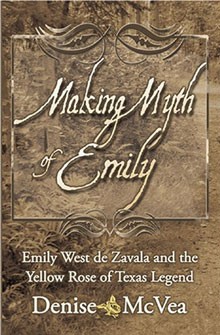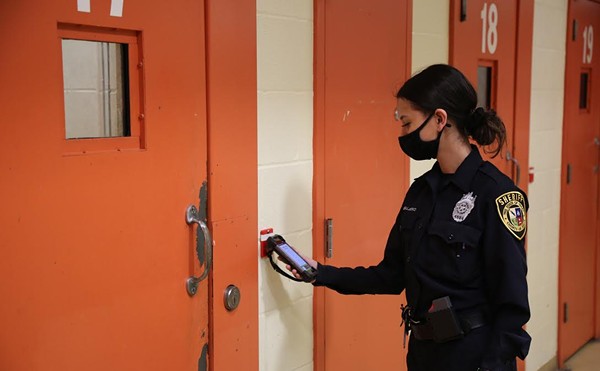According to the Handbook of Texas Online, Emily West-Morgan was a black woman who was in General Antonio Lopez de Santa Anna’s tent at San Jacinto on April 21, 1836, when Sam Houston and other rebel Texans attacked and won what they called Texas Independence. She is the legendary Yellow Rose of Texas who distracted the Mexican general, giving the advantage to the Texans.
Emily West de Zavala reportedly was a white woman from New York who arrived on the same ship with West-Morgan in 1835. Emily de Zavala was the wife of Lorenzo de Zavala, a political rival of Santa Anna until the latter declared himself emperor of Mexico. She and Lorenzo had children together, and had to flee the advance of the Mexican Army because Lorenzo had taken sides with the Texans. He was temporarily Vice President of the Texas Republic, and helped to write the new Texas Constitution.
Historians have long concluded that the Emilys who figured so prominently in the Texas Revolution were two separate women.
Not so, says Denise McVea in her book, Making Myth of Emily: Emily West de Zavala and the Yellow Rose of Texas Legend. McVea contends that historians who researched the battles at the Alamo and San Jacinto have relied on hearsay and inaccurate information, which has resulted in the “myth” that Emily the mulatto was a free black woman from New York who just happened to ride the same ship with Lorenzo’s Anglo wife.
McVea methodically examines the previous research, and makes the argument that Lorenzo actually met Emily in New Orleans, where “beautiful quadroons would appear in the marketplace in fine carriages ... `and` because of their beauty, grace, and education, were often treated like royalty by their male Anglo admirers.”
Foreign dignitaries, especially Spaniards and Frenchmen, would attend quadroon balls in an attempt to “acquire a tantalizing and devoted mistress.”
McVea contends that Lorenzo de Zavala could have met Emily in New Orleans, taken her to New York, and married her. The official history, she argues, has been a long series of attempts to hide the fact that Emily de Zavala had African blood in her veins. “Zavala would not be the first white man to marry a woman of color in the United States. Marriage between blacks and Mexicans was fairly common in Mexican territory around this time, and apparently not the subject of major debate,” she writes.
McVea makes a compelling argument that the two Emilys were one and the same, that de Zavala’s granddaughter, Adina, known for her work to preserve the Alamo as a shrine, was complicit in covering up her grandmother’s ancestry, and that the Daughters of the Republic of Texas have tried for decades to block efforts to give Adina credit for saving the Alamo.


















